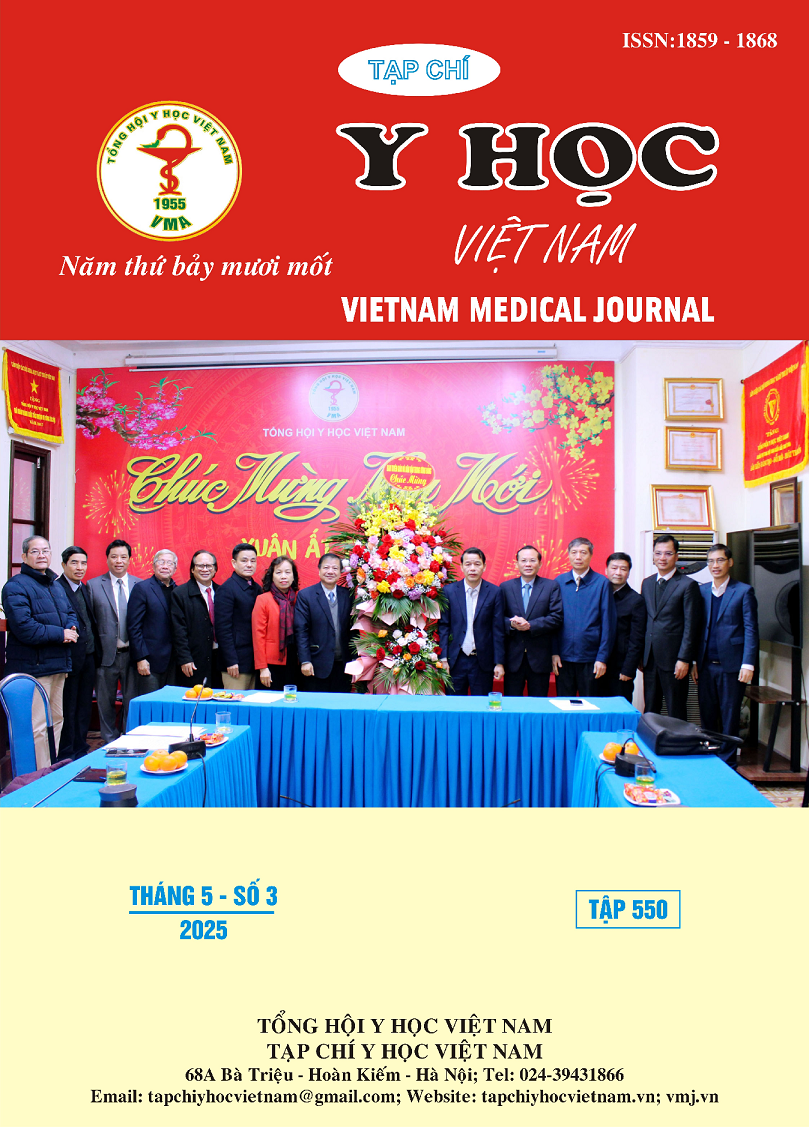APPLICATION OF ARTIFICIAL INTELLIGENCE IN THE HISTOPATHOLOGICAL DIAGNOSIS AND CLASSIFICATION OF LUNG CANCER ON BIOPSY SPECIMENS
Main Article Content
Abstract
Objective: To evaluate the effectiveness of artificial intelligence (AI) in the diagnosis and histopathological classification of lung adenocarcinoma using HE-stained biopsy images. The AI model automatically detects, localizes, and classifies non-small cell lung cancer (NSCLC) into adenocarcinoma, squamous cell carcinoma, and small cell carcinoma, and its performance is compared with that of pathologists. Subjects and Methods: A prospective descriptive study was conducted on 200 whole slide images (WSI) of lung tumor biopsies, including 100 malignant and 100 benign cases. Poorly differentiated carcinomas were further analyzed using immunohistochemical staining for accurate histological subtyping. The AI model employed a U-Net architecture combined with an EfficientNet-B1 backbone. Variables collected included benign/malignant diagnosis and histological subtypes (adenocarcinoma, squamous cell carcinoma, small cell carcinoma) determined by both AI and expert pathologists. Statistical indicators included sensitivity, specificity, accuracy, and ROC curves. Data analysis was performed using SPSS version 23. Results: The AI model achieved a sensitivity of 94%, specificity of 97%, and an AUC-ROC of 0.92. In subtype classification, the AI model showed a sensitivity of 89.9% for adenocarcinoma, 70.6% for squamous cell carcinoma, and 100% for small cell carcinoma. Compared to pathologists, AI underperformed in classifying squamous cell carcinoma. Conclusion: AI shows promising potential in supporting lung cancer diagnosis, but expert review remains essential, particularly for squamous cell carcinoma. Expanding the training dataset and integrating clinical data may enhance AI accuracy.
Article Details
Keywords
Artificial intelligence, digital pathology, whole slide imaging (WSI)
References
2. Yang JW, Song DH, An HJ, Seo SB. Classification of subtypes including LCNEC in lung cancer biopsy slides using convolutional neural network from scratch. Sci Rep. 2022;12(1):1830. doi:10.1038/s41598-022-05709-7
3. Yu G, Sun K, Xu C, et al. Accurate recognition of colorectal cancer with semi-supervised deep learning on pathological images. Nat Commun. 2021;12(1): 6311. doi:10.1038/s41467-021-26643-8
4. Coudray N, Ocampo PS, Sakellaropoulos T, et al. Classification and mutation prediction from non–small cell lung cancer histopathology images using deep learning. Nat Med. 2018;24(10):1559-1567. doi:10.1038/s41591-018-0177-5
5. Nicholson AG, Tsao MS, Beasley MB, et al. The 2021 WHO Classification of Lung Tumors: Impact of Advances Since 2015. J Thorac Oncol. 2022;17(3): 362-387. doi:10.1016/j.jtho.2021. 11.003
6. Kanavati F, Toyokawa G, Momosaki S, et al. A deep learning model for the classification of indeterminate lung carcinoma in biopsy whole slide images. Sci Rep. 2021;11(1):8110. doi:10.1038/s41598-021-87644-7
7. Liu M, Wu J, Wang N, et al. The value of artificial intelligence in the diagnosis of lung cancer: A systematic review and meta-analysis. PLOS ONE. 2023;18(3):e0273445. doi:10.1371/ journal.pone.0273445


